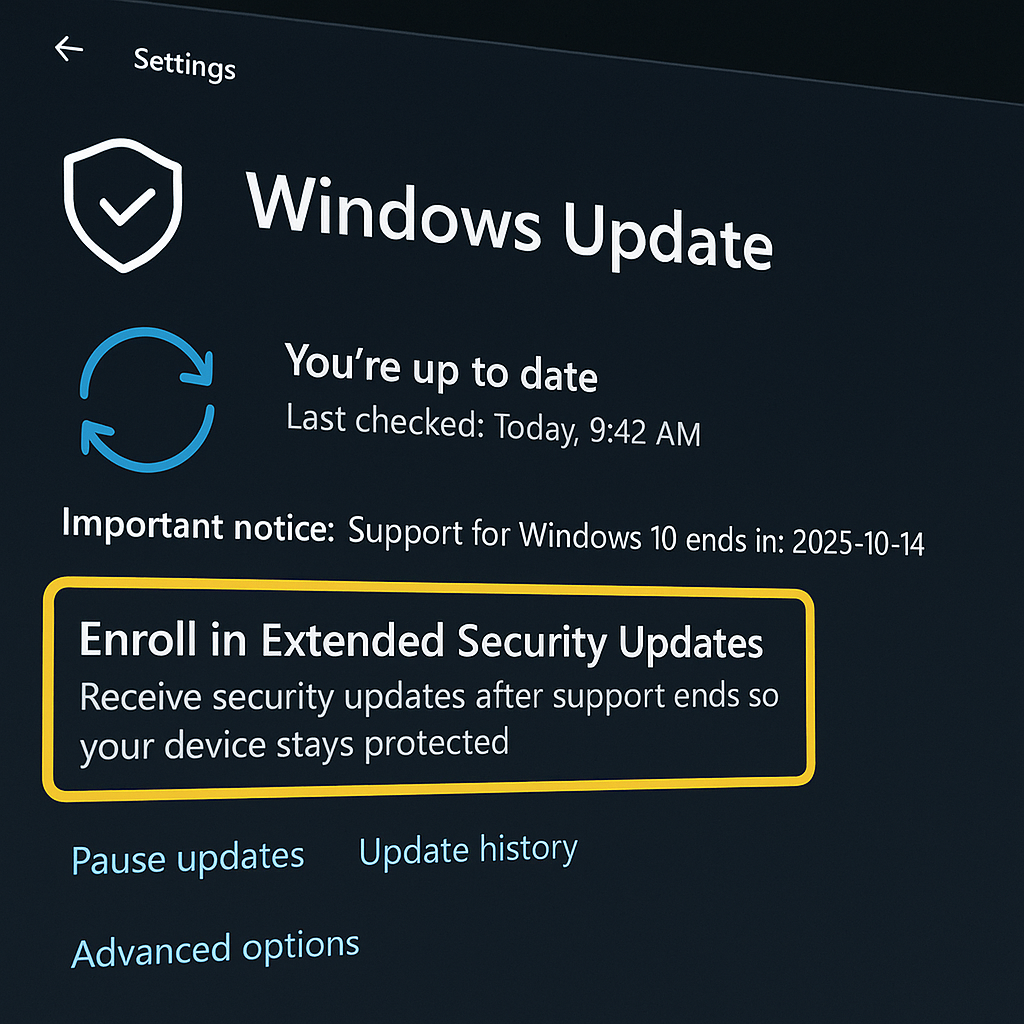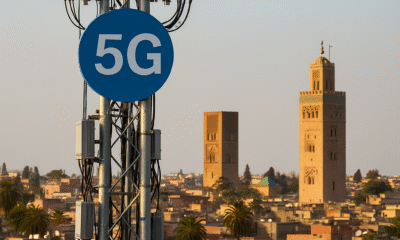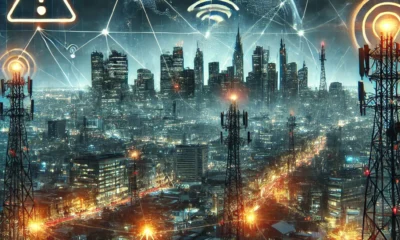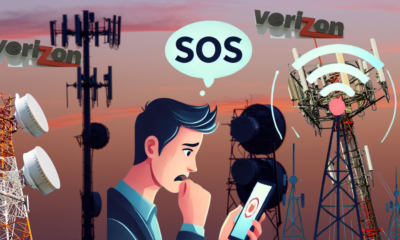business
What Caused the Verizon Outage? What We Know So Far

On September 30, 2024, Verizon experienced a significant network outage that left millions of customers across the United States unable to make phone calls, send messages, or use mobile data services for several hours. The disruption, which began early in the morning and persisted until the evening, affected key metropolitan areas such as New York City, Washington D.C., Atlanta, and parts of the Midwest. As of today, many customers are still seeking answers as to what caused the outage and how Verizon plans to prevent such events in the future.
Nature and Scope of the Outage
The outage began around 9:30 AM Eastern Time and affected both mobile voice services and data, leaving users unable to make or receive regular phone calls, access the internet, or use Verizon’s messaging services. Customers with iPhones reported seeing their phones switch to “SOS only” mode, indicating that they could only make emergency calls but were otherwise disconnected from Verizon’s network.
The impact was nationwide, with outage reports peaking at over 100,000 on Downdetector, a site that tracks service interruptions for major telecommunications and internet services. The most severely affected areas were concentrated along the East Coast, including New York, New Jersey, Pennsylvania, Georgia, and parts of Florida. Midwest states such as Ohio and Illinois also saw widespread reports of service disruption.
The outage affected not only personal customers but also corporate clients, with businesses experiencing disrupted operations and communications throughout the day. Ben Gurion Airport in Israel, which relies on Verizon’s network for some of its communication services, also briefly shut down a section of its wireless operations, emphasizing the global nature of the disruption’s consequences.
Initial Investigations: What Caused the Outage?
As of now, Verizon has provided some insight into what might have triggered the outage, although a comprehensive report is still forthcoming. According to a Verizon spokesperson, the root of the problem appears to have been a combination of network equipment failures and issues related to a recent software update.
1. Network Equipment Malfunction
Initial investigations point towards an equipment failure affecting Verizon’s core network, specifically a set of routers responsible for handling large volumes of network traffic across regions. Routers are crucial for maintaining the flow of data between different parts of Verizon’s network and with other telecom networks. A malfunction of this sort could lead to the kind of widespread service disruption experienced yesterday, particularly if the routers involved are key components of the backbone network that supports high data throughput.
Verizon’s engineering team identified a fault in one of the major router clusters located on the East Coast. The fault caused a cascading failure, which led to increased traffic rerouting and congestion in unaffected parts of the network, making the issue nationwide. The faulty router cluster was supposed to handle a significant portion of traffic, and when it went down, the increased load on other parts of the network caused widespread instability.
2. Software Update Complications
In addition to hardware failure, Verizon confirmed that a recent software update rolled out to its network infrastructure may have contributed to the outage. Software updates are a routine part of maintaining and improving network performance, including adding new features, fixing security vulnerabilities, and optimizing network functions. However, in this instance, the update seems to have inadvertently caused instability in some of Verizon’s key network functions.
Specifically, the software update appears to have led to a routing misconfiguration, which compounded the impact of the hardware failure. Routing misconfigurations can occur if the updated software incorrectly instructs network routers on how to direct traffic, leading to inconsistencies that disrupt normal operations. This situation often requires a manual rollback of changes and recalibration, which explains why the outage lasted as long as it did, with Verizon engineers working throughout the day to identify and correct the errors.
Customer Impact and SOS Mode
During the outage, many Verizon users reported seeing “SOS only” on their devices. This indicator means that the phone can connect only to other available networks for emergency calls but cannot access its usual provider’s services. When Verizon’s network went down, phones automatically switched to this mode as they tried to establish emergency connections through other carriers’ towers. This is a standard safety feature intended to ensure that people can still access emergency services even when their primary network is unavailable.
The “SOS mode” was particularly frustrating for users because it limited functionality to emergency communications only. This led to major disruptions for businesses, commuters, and anyone relying on Verizon’s network for work-from-home communications, emergency alerts, or other vital connections.
Restoration and Current Status
By 7:00 PM Eastern Time, Verizon announced that its network engineers had successfully restored service to affected areas. The restoration process involved rerouting traffic, replacing or reconfiguring the faulty hardware, and rolling back the problematic software update to a stable version. The company advised customers who were still experiencing issues to restart their devices, as reconnecting to the network manually would help establish a fresh connection to the nearest operational cell tower.
While the majority of services were restored by the evening, some users in certain parts of Georgia and Ohio reported intermittent issues even late into the night. Verizon has since deployed additional engineering teams to affected regions to ensure complete recovery.
Verizon’s Response and Apology
In a statement, Verizon’s Chief Technology Officer, Kyle Malady, expressed apologies for the inconvenience caused by the outage, noting that the company takes network reliability very seriously. He emphasized that Verizon’s engineering teams worked tirelessly to identify the cause and implement a solution as swiftly as possible. Verizon also announced that it will be conducting a full post-mortem analysis of the incident to prevent similar occurrences in the future.
Malady stated, “We understand how critical our services are to millions of customers who rely on us every day for their business, education, and emergency needs. We sincerely apologize for the disruption and are taking immediate actions to ensure network stability moving forward.”
Steps Moving Forward
To prevent a recurrence of such a significant disruption, Verizon has committed to several measures, which include:
- Network Hardware Review: Verizon plans to conduct a comprehensive review of all major router clusters and network hardware to identify potential points of failure. Any equipment nearing the end of its operational life will be replaced or upgraded to prevent similar cascading failures.
- Software Testing Enhancements: The company will also revise its software update protocols, adding additional layers of testing and monitoring before updates are rolled out across the network. This could involve a more rigorous staged rollout, where updates are tested on a smaller subset of the network before being implemented nationwide.
- Redundancy Improvements: Enhancing redundancy across key components of Verizon’s network is also on the agenda. By adding more redundant pathways and ensuring backup systems can seamlessly take over in case of equipment failure, Verizon hopes to reduce the risk of cascading failures that lead to widespread outages.
The Bigger Picture: Network Vulnerabilities
The Verizon outage highlights the vulnerabilities inherent in modern telecommunications infrastructure. With more people than ever relying on mobile networks for daily activities, from working remotely to connecting with loved ones, the consequences of service disruptions are significant.
As networks become more complex, with layers of hardware and software interacting across large geographical areas, even minor issues can quickly cascade into major failures. The need for robust testing, better redundancy, and improved monitoring is critical, not only for Verizon but for all telecommunications providers.
The outage also serves as a reminder of the importance of competition and diversity in service providers. With millions of people relying on a single network for connectivity, a failure in that network can have disproportionately large consequences. Encouraging infrastructure competition and cross-carrier support agreements can help mitigate the impacts of such failures, as phones could seamlessly switch to other networks in case of an outage.
Customer Reactions and Compensation
Customer reaction to the outage has been mixed. While some expressed understanding, recognizing the technical challenges that come with running a massive telecommunications network, others were less forgiving. Many took to social media to express frustration, particularly those who experienced business disruptions or missed important communications.
There have also been calls for Verizon to offer compensation to affected users. While Verizon has not yet announced any formal compensation plan, it is possible that customers may receive a billing credit for the downtime experienced, as has happened in some past large-scale outages.
Conclusion
The Verizon outage on September 30, 2024, was a major disruption that highlighted the challenges of maintaining complex telecommunications infrastructure. The initial cause appears to be a combination of network equipment failure and complications from a software update. Verizon’s response has been to apologize, restore services, and outline steps to prevent future outages, including a thorough review of hardware, improvements in software rollout procedures, and enhancements to network redundancy.
As the company continues to analyze the incident, customers will be looking for assurances that Verizon has learned from the experience and taken concrete actions to enhance network reliability. In the meantime, the event has also sparked broader discussions about the resilience of telecommunications infrastructure and the importance of ensuring uninterrupted connectivity in an increasingly connected world.
For further information on the Verizon outage, updates can be found at Verizon News Center and through customer notifications on their official app.
business
🇲🇦 King Mohammed VI’s Speech Sparks Heated Debate in Parliament — “جيل زد يُجيب”
Rabat — October 2025
Inside Morocco’s Parliament, tension and reflection filled the air just hours after His Majesty King Mohammed VI delivered his opening-session speech. What was meant as a national roadmap quickly turned into a day of open confrontation, emotional testimonies, and unexpected admissions from members of both majority and opposition blocs.
🏛️ A Speech That Touched Nerves
The King’s address, described by analysts as “direct and reform-oriented,” called for greater social justice, job creation, and balanced development across Morocco’s regions.
“No village left forgotten, no coast without a hand,” the King declared — a message that resonated deeply with citizens and lawmakers alike.
Within hours, parliamentary corridors buzzed with interviews, arguments, and introspection. Some MPs hailed the speech as “a moral reset,” while others questioned whether the government was capable of turning royal vision into tangible results.
🧠 From Rabat to the Sahara — Gen Z Responds
Younger members of Parliament — labeled as جيل زد (Gen Z) — became the focus of cameras and public curiosity. Many expressed frustration at what they see as a widening gap between political promises and everyday realities faced by Moroccan youth.
“The King spoke about unity and work. We agree — but the youth need a chance to prove themselves,” said one 28-year-old deputy.
“We have the energy; the system just needs to open its doors.”
Another young MP caused a social-media storm after saying that “in some ways, Moroccan social values are stronger than Germany’s.”
Critics accused him of downplaying Europe’s economic strength, while others applauded his pride in Moroccan family cohesion.
He later clarified his words, emphasizing that every nation faces challenges — and that Morocco’s real wealth lies in its people.
💬 Resignation, Reflection, and Responsibility
Just a week earlier, one deputy had submitted his resignation in protest over what he called “a lack of listening to the new generation.”
After the King’s address, he withdrew it.
“The royal speech gave me renewed hope. This is not the time to quit — it’s time to work,” he told reporters.
Across party lines, both RNI and PAM youth wings echoed similar messages: commitment to reform, but also impatience with bureaucracy.
Several MPs criticized ministers who, they said, “do not answer calls, do not reply to written questions, and have lost touch with citizens.”
⚖️ Opposition Voices: ‘A Government in Denial’
Members of the opposition used the session to accuse the cabinet of denial and poor communication, arguing that ministers are “living in a different reality” from citizens struggling with prices and unemployment.
“The royal messages were clear,” said one opposition leader. “The problem is not the King’s vision — it’s implementation.”
🌍 Morocco’s Path Forward
Analysts note that the King’s address aligned with long-standing themes: national cohesion, balanced territorial development, and respect for dignity in public service.
But the 2025 context — economic pressure, youth disillusionment, and the digital activism of Gen Z — gives these calls new urgency.
“This generation communicates differently,” said a policy researcher. “If institutions don’t adapt, they’ll lose credibility.”
🕊️ A Message Beyond Politics
As the parliamentary session ended, one young MP summed up the mood:
“الملك تكلّم… ونحن سنُجيب بالعمل — The King spoke, and we will answer through action.”
For now, the chamber that often echoes with partisan debates found itself united — briefly — under a single message:
Morocco’s future belongs to its youth, but responsibility belongs to everyone.
business
Luxury Carmaker Jaguar Land Rover Shuts IT Systems After Cyberattack

Tata Motors’ luxury brand shuts global IT systems amid suspected ransomware attack; no customer data reported compromised.
Jaguar Land Rover has shut down production and retail systems worldwide after a cyberattack “severely disrupted” operations. A hacking group linked to previous attacks on UK retailers has claimed responsibility. While no customer data appears compromised, the incident halted vehicle registrations and manufacturing, raising fresh alarms about the auto industry’s vulnerability to cyber threats
Jaguar Land Rover Hit by Major Cyberattack
Jaguar Land Rover’s global production and retail operations were brought to a standstill this week after a cyberattack “severely disrupted” its IT systems. The company shut down core applications and suspended manufacturing across key UK plants, including Halewood and Solihull, during one of the busiest sales periods of the year.
The UK’s National Crime Agency has opened an investigation, while the company races to restore operations. JLR confirmed that, as of now, there is no evidence that customer data has been compromise
Immediate Disruption to Plants and Dealers
The September 2 cyber incident forced JLR, owned by India’s Tata Motors, to halt assembly lines, send staff home, and suspend dealer systems used to register new vehicles. Dealers reported they could sell in-stock cars but could not process new registrations, delaying deliveries and revenue flows.
A company spokesperson said:
“We took immediate action to mitigate its impact by proactively shutting down our systems. We are now working at pace to restart our global applications in a controlled manner.”
Expert Reactions
Cybersecurity specialists warn the incident highlights the fragility of digitally integrated manufacturing.
Dray Agha, Senior Manager at Huntress, said:
“This incident highlights the critical vulnerability of modern manufacturing, where a single IT system attack can halt a multi-billion-pound physical production line.”
Aiden Sinnott, a researcher at Sophos, compared the attackers’ tactics to those of notorious cyber gangs:
“They speak English and they are keen on using social media channels. Lapsus$ shared similar tactics and demographics as the Scattered Spider collective.”
Technical Analysis
While JLR has not disclosed the specific intrusion method, several indicators suggest ransomware-style tactics:
- Proactive Shutdowns: JLR’s decision to disable IT and OT (operational technology) systems aligns with standard ransomware containment measures.
- Interconnected Impact: The attack disrupted not just IT but entire supply chains, underscoring the risks of tightly linked digital production networks.
- Extortion Motive Likely: Although no ransom demand has been confirmed, past incidents involving JLR and similar industries suggest data exfiltration and extortion are possible.
The incident underscores the importance of segmentation, real-time monitoring, and robust incident response across manufacturing IT and OT systems.
Impact and Response
- Employees: Factory staff in the UK were sent home as assembly lines stopped.
- Dealers & Customers: Dealers could not register new vehicles, delaying customer deliveries.
- Suppliers: Supply chains faced ripple effects, with halted orders and logistics disruptions.
JLR has engaged external cybersecurity teams and is working with government agencies to restore operations in stages. The company must also prepare for regulatory inquiries and possible long-term trust issues with suppliers and consumers.
Broader Context
The cyberattack comes amid a surge in UK corporate cyber incidents. Retailers including Marks & Spencer, Co-op, and Harrods have all suffered breaches in recent months.
For JLR, this is the second major attack in 2025, following a March breach where a ransomware group claimed to have stolen internal data. The company had invested heavily in cybersecurity modernization, including a contract with Tata Consultancy Services—but repeated incidents suggest lingering vulnerabilities.
Conclusion
Jaguar Land Rover’s shutdown highlights the growing risks of interconnected, digital-first manufacturing. In today’s auto industry, downtime no longer means a local setback—it translates directly into lost global revenue and potential long-term reputational harm.
As JLR works to restore its systems, the incident serves as a stark reminder: in modern manufacturing, operational resilience depends as much on cybersecurity as on engineering.
Sources:
Reuters, Britain’s JLR hit by cyber incident that disrupts production, sales;
The Guardian, Hackers linked to M&S breach claim responsibility for Jaguar Land Rover cyber-attack;
Financial Times, Jaguar Land Rover says production ‘severely’ disrupted by cyber incident;
SecurityWeek, Jaguar Land Rover Operations Severely Disrupted by Cyberattack.
business
Windows 10 Deadline Looms: How to Stay Protected Beyond 2025

Free support ends October 14, 2025; new KB5063709 unlocks Extended Security Updates enrollment to keep critical patches flowing through October 2026.
Microsoft is warning Windows 10 users that free security updates end on October 14, 2025. A new cumulative update, KB5063709, enables a built-in enrollment flow for the Extended Security Updates (ESU) program, offering another year of fixes to October 13, 2026. Edge and WebView2 will still receive updates on Windows 10 until 2028.
With less than two months before Windows 10 reaches end of support, Microsoft has issued a final security warning: after October 14, 2025, no more free fixes. A fresh update, KB5063709, now exposes an “Enroll in Extended Security Updates” option inside Windows Update to help users secure one more year of patches.
- End of free support: Windows 10 (22H2) stops receiving free security updates on Oct. 14, 2025.
- Bridge program: Microsoft’s Consumer ESU extends security fixes to Oct. 13, 2026; enrollment is now available from Settings after installing KB5063709.
- Browser exception: Microsoft Edge and WebView2 Runtime will keep updating on Windows 10 through at least Oct. 2028—even if you don’t buy ESU.
- Scale: Windows 10 still represents roughly 43% of active Windows desktops worldwide (Statcounter, July 2025).
“After October 14, 2025… Microsoft will no longer provide security updates or fixes.” — Microsoft support page. Microsoft Support
“KB5063709… includes a fix for a bug that prevented enrollment in extended security updates.” — BleepingComputer (Aug. 12, 2025). BleepingComputer
“Edge and the WebView2 Runtime will continue to receive updates on Windows 10… until at least October 2028.” — Microsoft Edge lifecycle. Microsoft Learn
A separate storyline continues to roil the transition: a California lawsuit alleges Microsoft set the 2025 cutoff to push AI-ready PCs; Microsoft points to ESU as a safety net, but litigation underscores user anxiety about older, ineligible hardware.
What’s changing on Patch Tuesday:
- KB5063709 (Aug. 2025): Required to expose the ESU enrollment UI under Settings → Update & Security → Windows Update. It also resolves the enrollment-wizard crash and rolls in July’s security fixes (including one zero-day).
Enrollment mechanics (consumer ESU):
- Prereqs: Windows 10 22H2, admin rights, and Microsoft account sign-in (local accounts are not supported for ESU).
- Cost options: $30 one-year ESU, 1,000 Microsoft Rewards points, or free if you enable OneDrive settings sync—all visible in the built-in wizard after KB5063709.
Risk surface if you skip ESU:
- Unpatched remote code execution and privilege-escalation flaws accrue monthly across the kernel, Win32k, networking stack, printing, and driver ecosystems. Even with a supported browser, OS-level exposures (SMB, RPC, LSA, Credential Guard bypasses) remain unmitigated. (Derived from Microsoft monthly CVE cadence; see KB5063709 advisory context.)
Mitigations checklist (if you must remain on Windows 10):
- Enroll in ESU and keep Windows Defender/EDR signatures current.
- Harden attack surface: disable legacy protocols (SMBv1), restrict RDP, enforce LSA protection, and require smartcard/Windows Hello where possible. (General guidance aligned with Microsoft security baselines.)
- Application control: enable ASR rules and Smart App Control-equivalents; prefer standard user rights.
- Network containment: segment legacy Windows 10 devices; use firewall allow-lists and zero-trust access.
- Browser updates: keep Edge/WebView2 current; isolate risky web apps in Application Guard where available.
Impact & Response
Who’s affected: Home users, SMBs, schools, and agencies still running Windows 10—hundreds of millions of devices globally. Statcounter shows Windows 10 usage near 43% in July 2025, meaning a large residual population will face patch gaps without ESU.
Actions to take now:
- Install KB5063709, then open Windows Update → Enroll in Extended Security Updates and choose a plan.
- Plan upgrades to Windows 11 24H2+ or supported alternatives; Microsoft reiterates Oct. 2025 as the firm cutoff for free updates.
Long-term implications: Expect shrinking driver/app support and rising exploit availability on unpatched systems, even as browsers continue to update through 2028.
Background
Microsoft set Windows 10 22H2 as the final feature version and has repeated the Oct. 14, 2025 deadline since 2023–24 guidance. ESU is designed as a temporary bridge, not a multi-year extension. Browser support to 2028 offers partial protection, but it does not replace OS security hardening.
- “ESU buys time—but not immunity. Treat it like a controlled exit ramp: enroll now, apply strict hardening (kill SMBv1, lock down RDP, enforce LSA protection), and move critical workloads to supported platforms within 12 months. The cost of delaying migration will be paid in incident response.” — El Mostafa Ouchen, cybersecurity author & practitioner.
- Microsoft (support notice):
“After October 14, 2025… we will no longer provide security updates or fixes.” - BleepingComputer (on KB5063709):
“The update… fixes a bug that prevented enrollment in extended security updates.” - Microsoft Edge team (lifecycle policy):
“Edge and WebView2 will continue to receive updates on Windows 10 until at least October 2028.”
Conclusion
Microsoft’s warning is unambiguous: Windows 10’s free patch era ends on October 14, 2025. The KB5063709 + ESU path is a short-term safety measure to October 2026, not a strategy. Organizations and households should enroll if needed—but prioritize upgrading or retiring Windows 10 endpoints to reduce exposure as exploit pressure rises.












